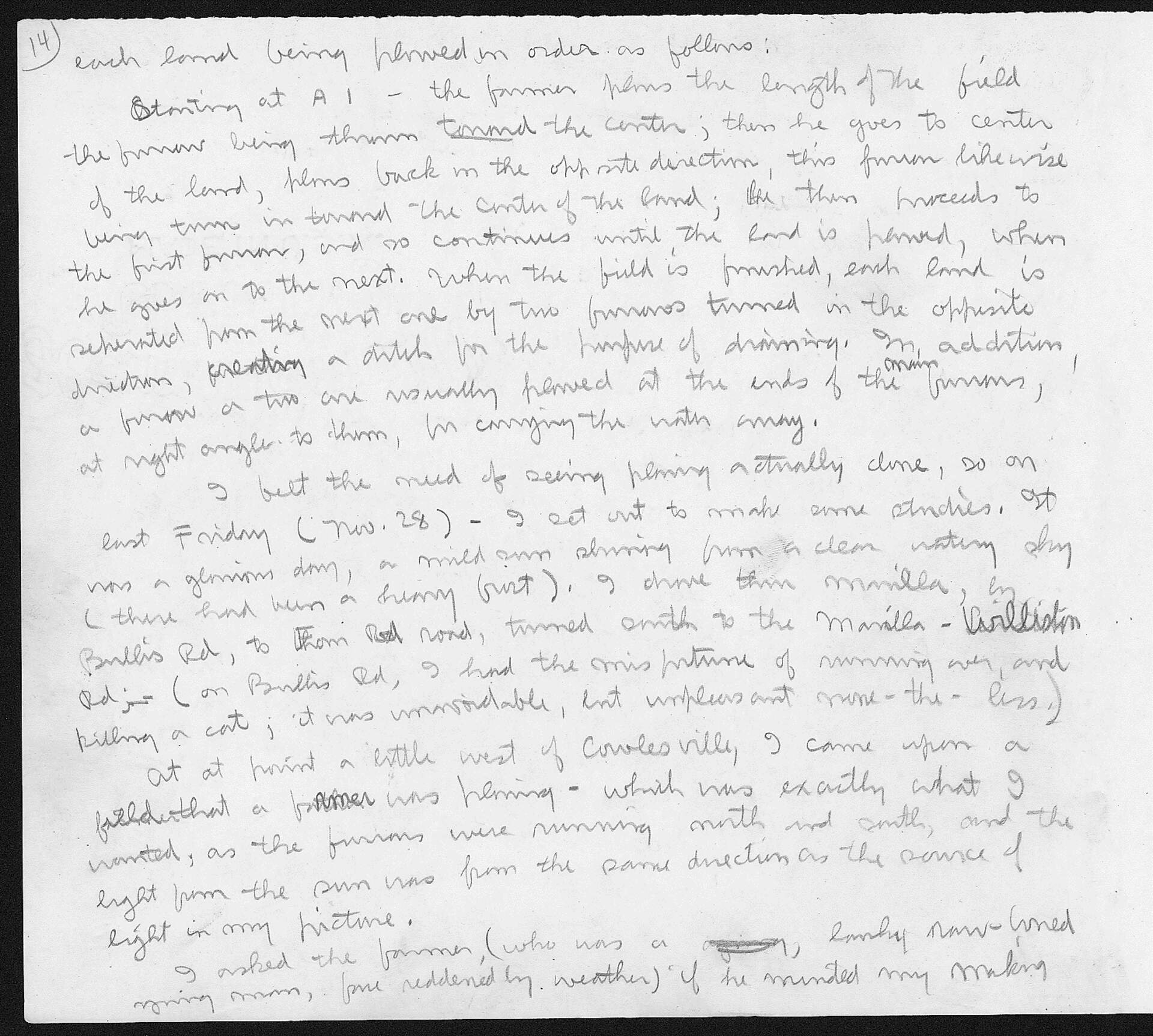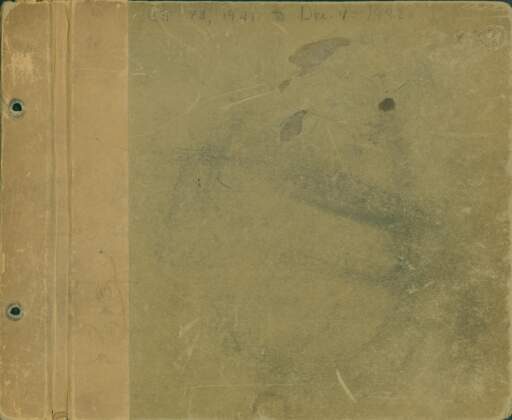Charles E. Burchfield (1893-1967)Volume 44, Page 14
December 3, 1941
cardboard notebook bound with string
8 1/2 x 11 inches
Gift of the Charles E. Burchfield Foundation, 2000
14. each land being plowed in order as follows:
Starting at A1 – the farmer plans the length of the field the furrow being thrown toward the center; then he goes to the center of the land, plows back in the opposite direction, this furrow likewise being (n.d.) in toward the center of the land; he the proceeds to the first furrow, and so continues until the land is plowed, when he goes on to the next. When the field is finished, each land is separated from the next one by two furrows turned in the opposite direction, creating a ditch for the purpose of draining. In addition, a furrow or two are usually plowed at the ends of the main furrows, at right angles to them, for carrying the water away.
I felt the need of seeing plowing actually done, so on last Friday (Nov. 28) – I set out to make some studies. It was a glorious day, a mild sun shining from a clear watery sky (there had been a heavy frost). I drove thru Marilla, by Bullis Rd, to Fhom (n.d.) road, turned south to the Marilla – Williston Rd. – (on Bullis Rd, I had the misfortune of running over, and killing a cat; it was unavoidable, but unpleasant none-the-less.)
At at (sic) point a little west of Cowlesville, I came upon a field that a farmer was plowing – which was exactly what I wanted, as the furrows were running north and south, and the light from the sun was from the same direction as the source of light in my picture.
I asked the farmer, (who was a lanky raw -toned young man, face reddened by weather) if he minded my making


